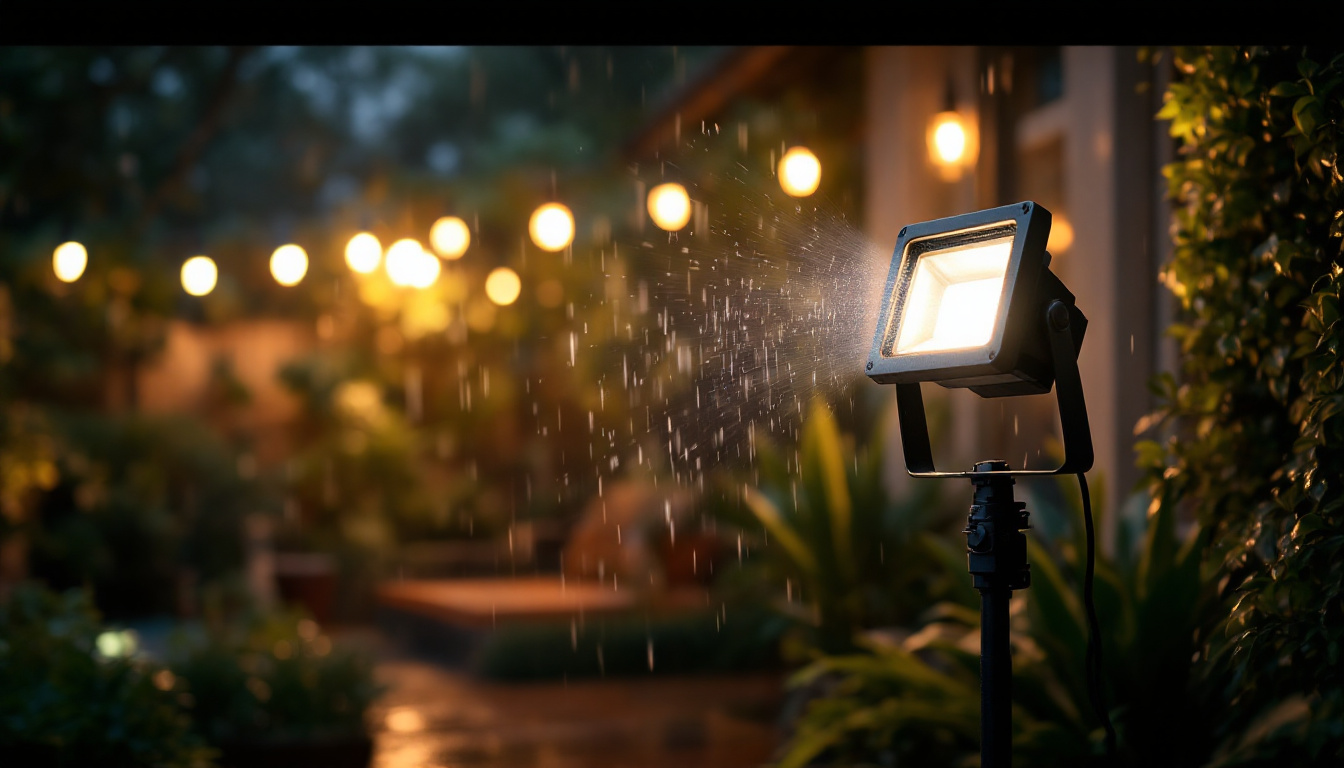
When installing lighting fixtures, the electrical round box cover is more than just a finishing touch. It serves as a critical safety component that protects wiring connections and prevents accidental contact with live wires. For lighting contractors, selecting the right round box cover ensures compliance with electrical codes and enhances the durability and aesthetics of the installation.
Round box covers are designed to fit over round electrical boxes, which are commonly used for ceiling-mounted fixtures, recessed lighting, and junction points. These covers come in various materials, sizes, and designs, each suited to specific applications and environments. Choosing the appropriate cover can prevent moisture ingress, reduce fire hazards, and maintain the integrity of the electrical system over time.
In addition to their protective functions, round box covers can also play a significant role in the overall design of a space. For instance, decorative covers can complement the style of a room, whether it be modern, traditional, or industrial. Many manufacturers offer a range of finishes, from sleek metals to painted options, allowing contractors and homeowners to match the covers with existing fixtures and decor. This attention to detail not only enhances the visual appeal but can also increase the perceived value of the property.
Moreover, the installation of round box covers can vary based on the specific requirements of the lighting fixture being used. Some covers are designed with additional features, such as integrated gaskets for sealing against moisture or built-in mounting brackets for easier installation. Understanding these nuances is essential for electricians and contractors, as it allows them to provide tailored solutions that meet both safety standards and aesthetic preferences. As technology advances, we may also see the introduction of smart covers that incorporate sensors or connectivity features, further expanding the functionality of these seemingly simple components in modern lighting installations.
Plastic round box covers are lightweight, corrosion-resistant, and cost-effective. They are ideal for dry indoor environments and are often used in residential lighting projects. However, plastic covers may not withstand high temperatures or mechanical impacts as well as metal alternatives. Additionally, the aesthetic versatility of plastic allows for a variety of colors and finishes, making them suitable for decorative applications where appearance is a priority. This adaptability can be particularly beneficial in home renovations or design-focused projects where the visual appeal of fixtures is paramount.
Metal covers, typically made from steel or aluminum, offer superior durability and heat resistance. They are preferred in commercial or industrial settings where robustness is essential. Metal covers also provide better grounding options, which can be crucial for certain lighting installations requiring enhanced safety measures. Furthermore, metal covers can be treated with various coatings to enhance their resistance to rust and wear, making them suitable for environments where exposure to harsh chemicals or extreme temperatures is a concern. This added longevity can translate to lower maintenance costs over time, making metal a wise investment for long-term projects.
In environments exposed to moisture, such as bathrooms or outdoor areas, covers made from weather-resistant materials or those with gasket seals are necessary. These specialty covers help prevent water intrusion, which can cause short circuits or corrosion. Lighting contractors should assess the installation environment carefully to select covers that meet the necessary protection standards. For instance, in coastal regions where saltwater corrosion is a factor, stainless steel or specially coated aluminum covers might be preferred to ensure longevity and reliability.
Moreover, in environments that require additional safety measures, such as food processing facilities or laboratories, covers made from non-toxic materials that can withstand cleaning chemicals are essential. These covers not only protect the electrical components but also ensure compliance with health and safety regulations. The choice of materials in these scenarios can significantly affect the overall safety and efficiency of the lighting systems, highlighting the importance of selecting the right cover for specific applications. As technology advances, new materials are continually being developed, offering even more options for specialized needs, such as antimicrobial finishes or enhanced UV resistance, further expanding the possibilities for effective lighting solutions.
Round box covers come in various diameters and depths to accommodate different box sizes and wiring configurations. Using a cover that does not fit properly can leave gaps, exposing wiring and increasing the risk of electrical faults or fire hazards. It’s essential to choose a cover that not only fits snugly but also complements the overall design of the installation, ensuring both functionality and aesthetic appeal.
Contractors must measure the electrical box accurately and consider the thickness of any insulation, wiring, or mounting hardware present. Some covers are designed with adjustable features or knockouts to facilitate cable entry, which can simplify installation and improve safety. Additionally, the choice of materials for these covers can vary widely, from durable plastics to robust metals, each offering different levels of protection against environmental factors. For instance, metal covers may provide enhanced durability in high-traffic areas, while plastic options might be more suitable for lightweight applications where corrosion is a concern.
National and local electrical codes often specify requirements for box covers, including material, size, and labeling. Lighting contractors should stay up-to-date with these regulations to avoid costly rework or safety violations. For example, covers used in damp locations may require specific ratings or certifications. Understanding these codes is not only crucial for compliance but also for ensuring the safety of the installation, as non-compliant covers can lead to serious hazards, including electrical shocks or fires.
Furthermore, contractors should be aware that different regions may have unique amendments to the national codes, which can impact the selection of box covers. For instance, areas prone to severe weather conditions may necessitate covers that can withstand higher levels of moisture or wind resistance. Regular training and consultation with local code enforcement officials can help contractors navigate these complexities, ensuring that their installations meet all necessary standards while providing peace of mind to clients regarding the safety and reliability of their electrical systems.
Securing the round box cover correctly is vital to maintain a safe and professional installation. The cover should sit flush against the ceiling or wall surface without gaps. Using the correct screws and ensuring they are tightened to the recommended torque prevents loosening over time. Additionally, it’s important to check that the box itself is properly anchored to the framing behind the wall or ceiling. This not only enhances the stability of the fixture but also ensures that it can withstand any vibrations or movements that may occur over time, particularly in high-traffic areas or in homes with significant structural shifts.
Before installing the cover, contractors should verify that all wiring connections are secure and that no bare wires are exposed. Using wire nuts or other approved connectors is essential. Additionally, ensuring that wires are neatly arranged inside the box prevents damage to insulation and facilitates future maintenance. It’s also advisable to label wires clearly, especially in complex installations, to simplify troubleshooting or upgrades later on. Furthermore, contractors should consider the potential for heat buildup within the box. Using heat-resistant materials and ensuring adequate spacing between wires can help mitigate risks associated with overheating, thus enhancing the longevity and safety of the lighting installation.
While functionality and safety are paramount, the appearance of the round box cover can influence client satisfaction. Covers are available in various finishes, including white, metallic, or paintable surfaces, allowing contractors to match or complement the lighting fixture and surrounding decor.
For high-end projects, custom or decorative covers may be an option, providing a seamless look that enhances the overall design. Lighting contractors should discuss these options with clients during the planning phase to align expectations and deliver a polished final result.
Uneven ceilings or walls can make it difficult to install round box covers flush. Using shims or specialized mounting brackets can help achieve a clean fit. Contractors should inspect the installation site beforehand and prepare accordingly to avoid gaps that compromise safety.
Sometimes, multiple cables or conduit entries can overcrowd a round electrical box, making cover installation tricky. Selecting a larger box or using a cover with additional knockouts may be necessary. Proper planning and adherence to box fill calculations prevent overcrowding and ensure safe operation.
Periodic inspection of electrical round box covers is important, especially in commercial or industrial settings. Over time, covers can become loose, damaged, or corroded, posing safety risks. Lighting contractors should advise clients on routine checks and be prepared to replace covers as part of maintenance services.
During inspections, checking for signs of discoloration, cracks, or moisture ingress can help identify potential problems early. Prompt action can prevent electrical failures and extend the lifespan of lighting installations.
Electrical round box covers play a vital role in lighting installations, combining safety, functionality, and aesthetics. Lighting contractors must carefully consider material selection, size compatibility, and installation techniques to ensure compliance with codes and client satisfaction. Addressing common challenges proactively and emphasizing maintenance can enhance the reliability and appearance of lighting systems.
By mastering these points, lighting contractors can deliver installations that are not only safe and code-compliant but also visually appealing and durable, reinforcing their reputation for quality workmanship.
Ready to elevate your lighting installations with the highest quality electrical round box covers and more? Look no further than LumenWholesale, where we offer an extensive selection of spec-grade lighting products at unbeatable wholesale prices. Say goodbye to middleman markups and hello to superior lighting solutions that meet the highest industry standards. With free shipping on bulk orders, you can stock up on everything you need for your projects while enjoying the best value. Don’t compromise on quality, affordability, or convenience. Visit LumenWholesale today and experience the difference for yourself!

Explore the top challenges lighting contractors face when installing exterior wall sconces.

Discover the essential insights and advantages of using Set Light LED technology for lighting contractors.

Discover essential tips and common pitfalls for lighting contractors when installing waterproof outdoor flood lights.

Discover the essential best practices lighting contractors use when selecting and installing ceiling industrial lamps.